
While at my phenological site this January, there were many changes. The first being the stream – the flow was much slower than usual, and parts were iced over. Additionally, at this time the ground is covered in snow and no leaves are visible on the ground, or on the trees. This leaves very little coverage for animals, and so I also noted that animal activity was minimal. This could also be because of the increased traffic of people – as seen in the snow there are many people and dog tracks.

While this print is very distinct and consequently easier to identify, I could also tell it was a domestic dog because of the random pattern of running, its proximity to the trail, the paw size, and the gait – as discussed in lecture. But dog prints were not the only animal activity I saw!

This print was found a little further off the trail, and because of its diagonal gait and hoof imprint – I am inclined to think it was a deer. The sizing is right, and because of the spread of the closeness of the prints the deer was likely walking for a drink of water, or maybe some food.
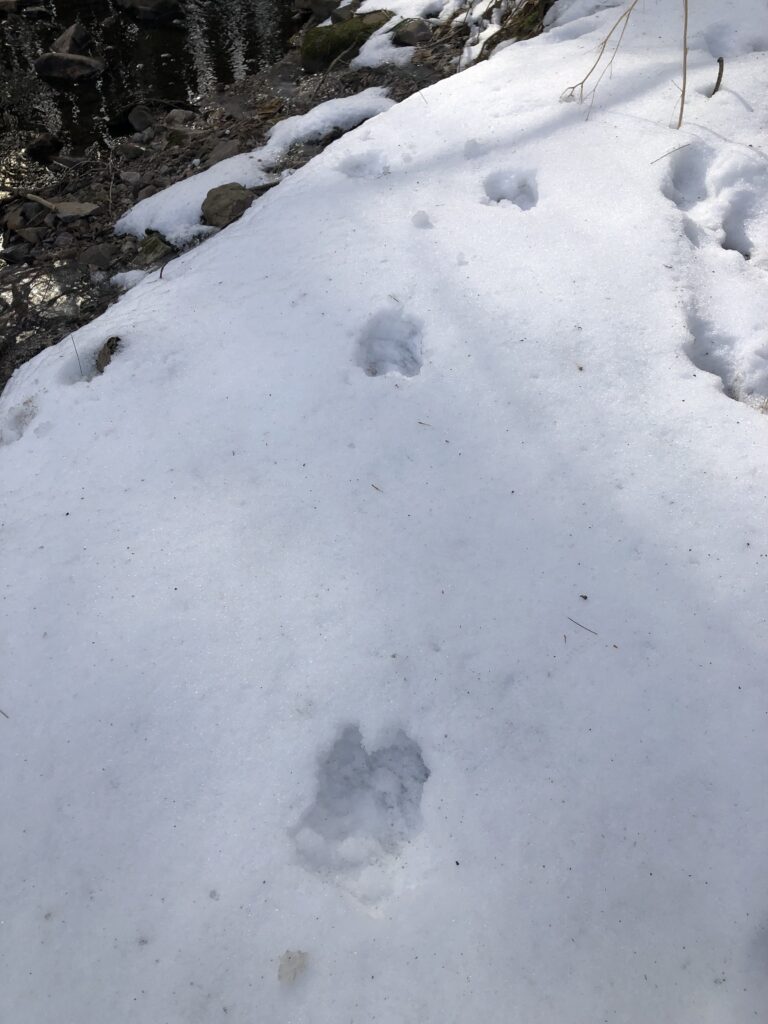
This next print is harder to identify. The tracks are not as deep in the snow as the others, and so the print is less defined. It is clear that it is a bounder, with the feet landing together, and judging by the size it is a small mammal. My guess is a rabbit because of the long and narrow paw size, but other creatures such as weasels are also found in Vermont and could be the track-maker!
Next, most shockingly, I found blood in the snow. Be warned – the following pictures contain images with blood spatters in them that may cause some discomfort.
This is the first splash of blood that I found. It was not far off of the trail, and I decided to follow it for a bit.
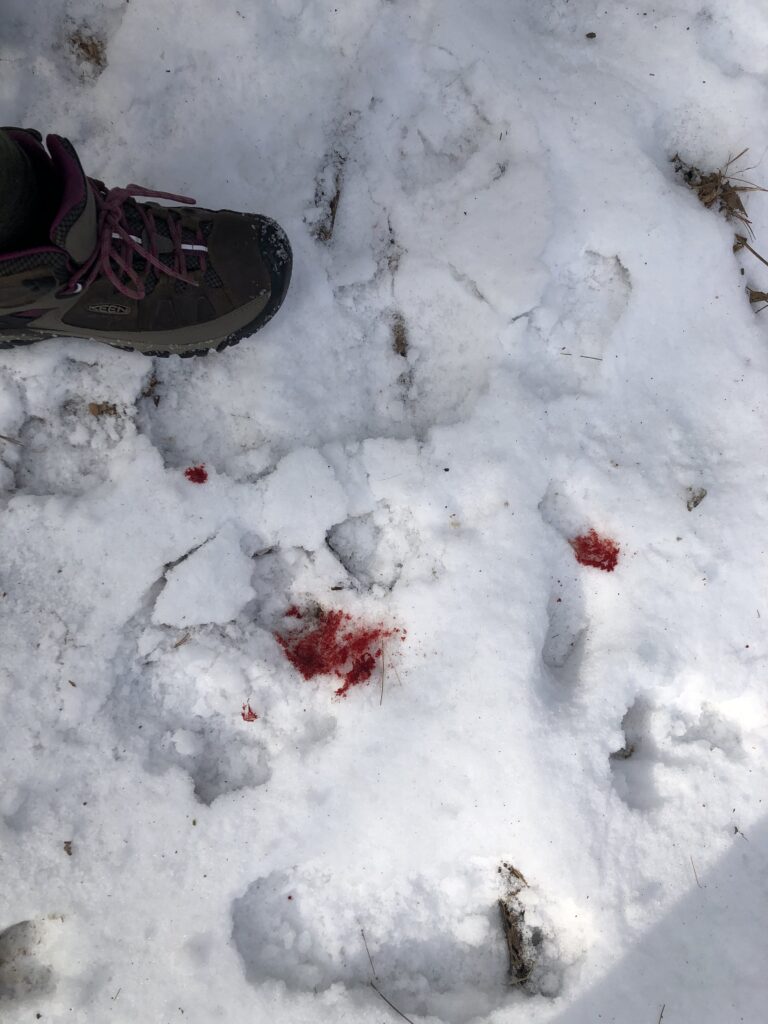
After following the blood a little deeper into the woods I found this: Deer poop surrounded by blood. While the area had too many tracks and other disturbances to determine what exactly was leaving the blood – judging by the poop I would guess it was an injured deer. If not, I would have to guess a dog that got its paw cut on some ice because of the frequency of dog prints in the area.
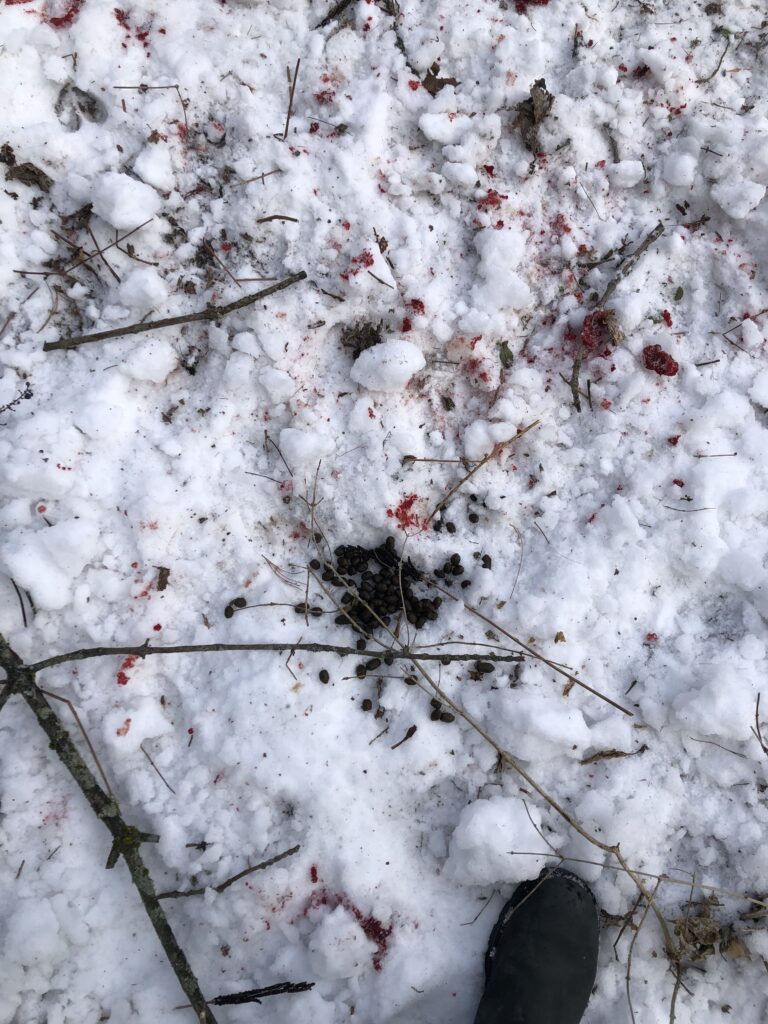
Moving on from the wildlife aspect of my blog site, there were a few deciduous trees that really dominate the area. Boxelder, Sugar maple, and Norway Maple trees are the most common, with a few pines a little farther off. This is an image of a young Boxelder tree (close and to the left of the image).

The following twig is one that is very common in this area, and is what I believe to be a Sugar Maple because of its brown and pointy buds with opposite branching.
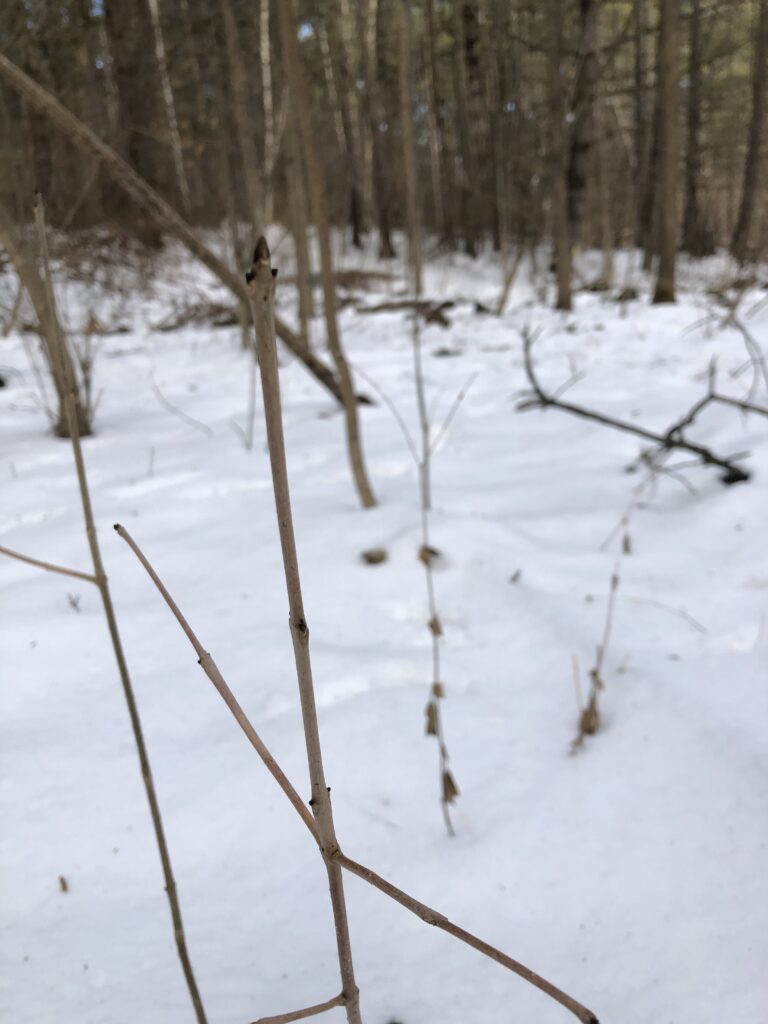
The following is a sketch I made of a different twig that I believed to be a Norway Maple twig.
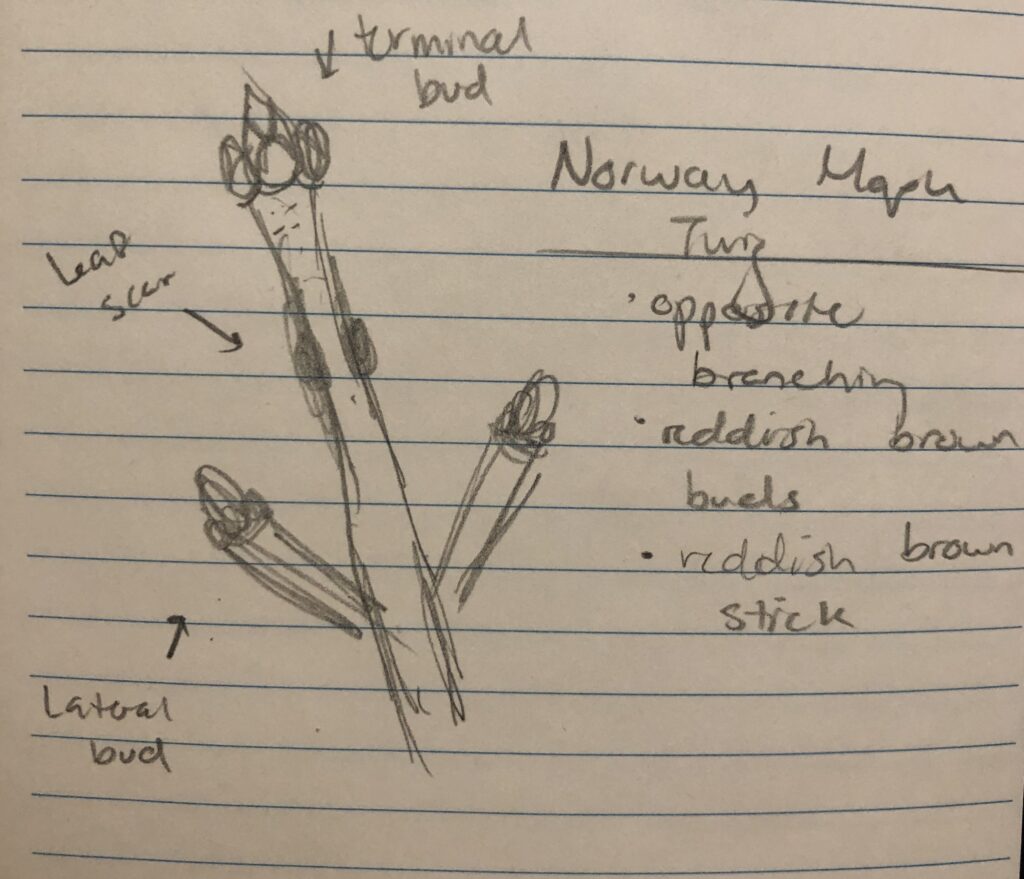
Finally, here are my field notes:
